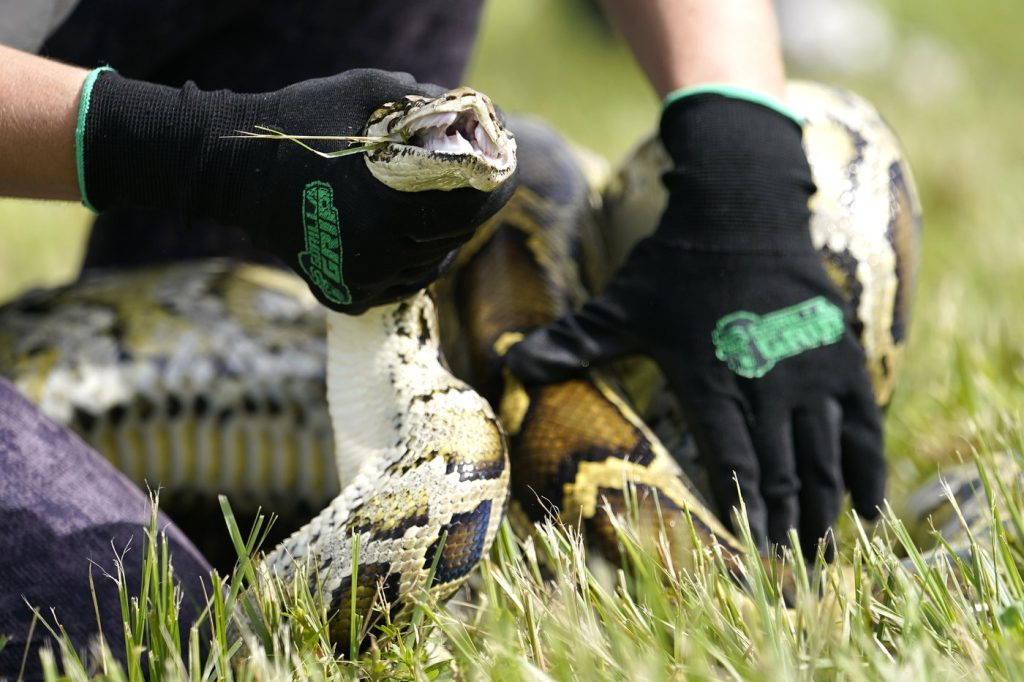WEST PALM BEACH, Fla. (AP) In an innovative move to combat the invasive Burmese python population in the Florida Everglades, researchers are deploying robotic rabbits designed to attract these large snakes out of their hiding spots. The South Florida Water Management District is spearheading this effort, employing the robotic bunnies as a new tool in the ongoing battle to protect native wildlife that has been severely impacted by the snakes.
Burmese pythons are wreaking havoc on the Everglades ecosystem, having decimated 95% of small mammals and countless bird species. According to Mike Kirkland, the lead invasive animal biologist at the water district, detecting these snakes has proven challenging due to their excellent camouflage in the field. Previous attempts to lure pythons using live rabbits were deemed too costly and time-consuming.
This summer, the water district collaborated with researchers from the University of Florida to test 120 robotic rabbits as a potential solution. These battery-powered devices mimic the appearance, movement, heat, and even scent of a real rabbit, making them a convincing lure for hungry pythons. The robots are solar-powered, can be controlled remotely, and are placed in enclosures equipped with cameras that signal when a python approaches. When alerted, contractors can be dispatched to capture the invasive snake.
The investment in each robotic rabbit comes to approximately $4,000, funded by the water district. Since Burmese pythons are not native to Florida, they have proliferated in the swamps, escaping from captivity or being released as unwanted pets. Female pythons can lay between 50 and 100 eggs at a time, with a gestation period of 60 to 90 days, leading to significant population increases.
There is a lack of certainty regarding the total number of pythons in Florida, with estimates varying widely from “tens of thousands” to as high as 300,000. Pythons face few natural predators, although they sometimes encounter alligators; some bobcats and coyotes will eat their eggs. Since the year 2000, over 23,000 pythons have been removed from the wild through various efforts.
The newly introduced robotic rabbits are part of an ongoing strategy to address the invasive species problem. According to Ron Bergeron, a board member of the South Florida Water Management District, removing each invasive python contributes positively to Florida's environmental health and the survival of native wildlife.
In addition to direct removal strategies, the Florida Fish and Wildlife Conservation Commission allows for the humane killing of pythons year-round on both private and wildlife-managed lands. Each year, the commission organizes the “Florida Python Challenge,” which offers cash prizes for the most pythons caught and the longest snake captured. In July, 934 participants from 30 states took part in the challenge, resulting in the capture of 294 pythons, with one individual winning $10,000 for catching 60 snakes.
At this stage, it is too soon to judge the effectiveness of the robotic rabbit program. However, officials express cautious optimism about its potential. Kirkland remarked that, while the project is still in its early phases, there is confidence that it can succeed given the time necessary to refine its details.










